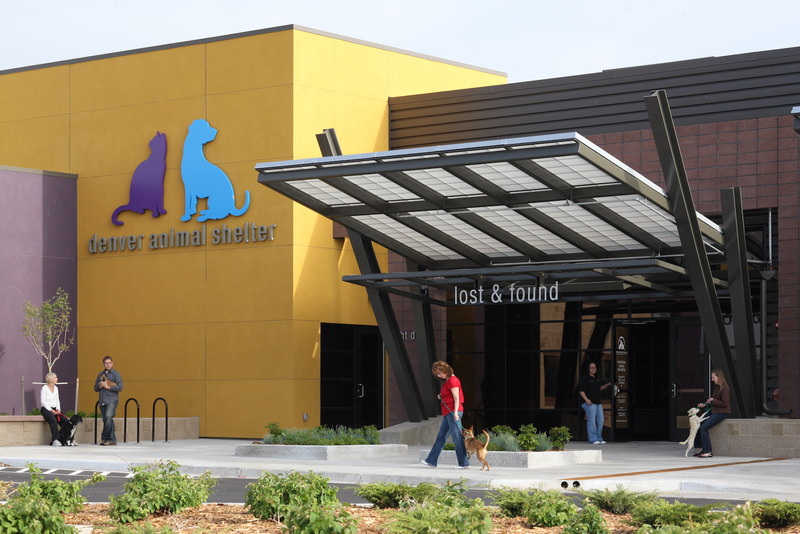The Local newsletter is your free, daily guide to life in Colorado. For locals, by locals.
General obligation bonds sound boring, like something in the glossary of your high school civics textbook. But also like high school civics, you should probably pay attention: GO bonds (at least they have a sexy acronym) allow Denver to borrow money against its future property taxes to restore, replace, and expand infrastructure. In other words, they’re like home improvement loans the city uses to modernize itself by replacing its nasty shag carpeting with sleek wood flooring—metaphorically speaking. And in 2017, the city will ask voters to approve a GO bonds package that could be worth up to $900 million.
The first step came in November, when public and private groups offered up suggestions; all told, there are 228 proposed projects valued at $2.9 billion. (Here’s a list of them.) Obviously, there’s not enough cash to go around. So in March, five different committees—for transportation and mobility, city-owned facilities, parks and rec, safety facilities, and culture—began sifting through the proposals to determine which deserve priority. On May 17, the committees will begin delivering their recommendations to an executive committee (the meetings are public; see the schedule here), who in mid-June make their recommendations to the mayor, who makes his recommendations to city council members in late July or early August, who then make their recommendations to voters via a bond referendum in November 2017. And you thought government was bureaucratic.

Voters approved Denver’s last such infrastructure program, Better Denver Bond, in 2007 and spent more than $550 million on 380 projects over the past decade. To get a clearer understanding of how those projects have affected the city—and how the 2017 referendum might improve the Mile High City—we examined three of the most costly projects from Better Denver Bond.
Denver Municipal Animal Shelter
Cost: $16.2 million
Completed: 2011
Pound (as in doggie-jail) is a pejorative to Doug Kelley, the former director of Denver Animal Care and Control. But there’s no other way to describe the city’s old shelter, which looked like a scene out of a horror movie with its clawed up doors, cinder block walls, and overall aura of despair. Worse yet: the drainage system from the kennels ran past the animals, creating a breeding ground for disease.
Dog-obsessed Denver can be much prouder of its new shelter. It has beautiful bells and whistles, such as exercise areas for the dogs, “real-life” rooms that allow potential adopters to play with animals that fetch their hearts, and huge windows to defend against the feeling of doom so present at the old shelter. Just try not to become obsessed with watching the kitties playing in the lobby.
More important, the new shelter was constructed with three long “pod” rooms for lost-and-found dogs. This allows the crates to be lined up in a row rather than facing each other—a situation that can lead to one animal breathing on another, inciting a kennel cough (or worse) epidemic. Plus, the facility boasts its own animal clinic, so sick pups and cats don’t have to be rushed to a veterinarian’s office.
Denver Police Crime Laboratory
Cost: $36.2 million
Completed: 2012
The Denver Police Department first opened a crime lab in the 1930s to better implement the then-novel investigative technique of fingerprinting. By the mid-2000s, however, the DPD’s Forensics and Evidence Division hadn’t grown as quickly as needed. Then on the sixth floor of DPD’s Administration Building, the division was landlocked, with different departments sharing rooms, staffers stuffed into three-foot-wide cubicles, and the DNA database residing in a closet. Denver couldn’t compare to other city’s crime labs—at least according to our viewings of CSI: Miami.
The new building’s advanced technology—including a chamber that vaporizes super glue to adhere to prints and a bullet recovery tank—has drawn visits from coppers around the globe, such as Abu Dhabi. The most beneficial upgrade, however, has been the sheer size of the place, which is four times larger than the old office. That’s allowed the division to hire more staff—63 with the capacity for almost 40 more—so DPD now collects and processes more evidence. Consequently, DNA, fingerprint, and bullet matches in national databases have risen about 200 percent. Which, now that we know that little fact, means we’re 200 percent less likely to commit a crime.
Denver Museum of Nature & Science
Cost: $56 million ($30 million from the city; $26 million from private donors)
Completed: 2014
The DMNS has always been a requisite stop for field-tripping Denver students, but it probably paled in comparison to the zoo, what with children having the enter through the south side of the building—right past the dumpsters. (At least the zoo’s odor came with cute animals.) This project not only increased the size of the DMNS by 126,000 square feet, it gussied up the facility’s back entrance with more inviting adornments, such as a rainbow that leads students directly into the museum. Once there, children can revel in a Discovery Zone that’s doubled in size, four new interactive classrooms, and a second exhibit space, so DMNS can host an adult exhibit and a children’s exhibit (like 2015’s smash “Mythic Creatures: Dragons, Unicorns, and Mermaids”) concurrently.
Since the project’s completion, DMNS has experienced a 50 percent increase in classroom attendance (thanks to the new interactive classrooms) and a 47 percent growth in attendance for children younger than six. In 2017, the DMNS will ask for deferred maintenance to be included in the GO bond package, but nothing major. “We know we got the big, flashy money last time,” says Ed Scholz, DMNS’ vice president of finance and business operations. “It’s somebody else’s turn.”








